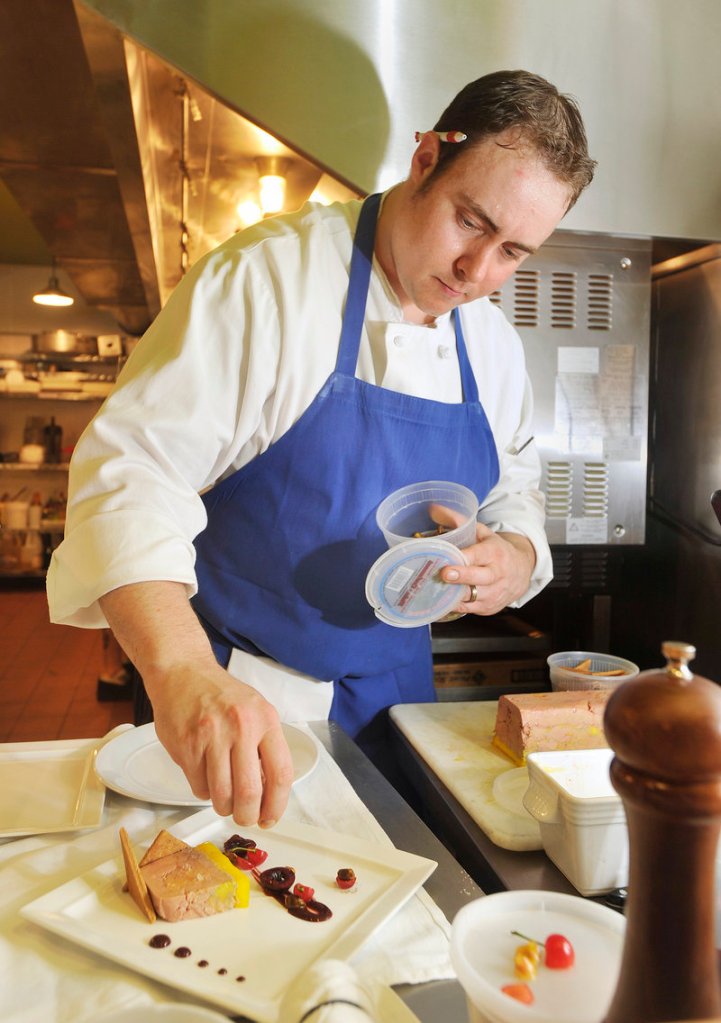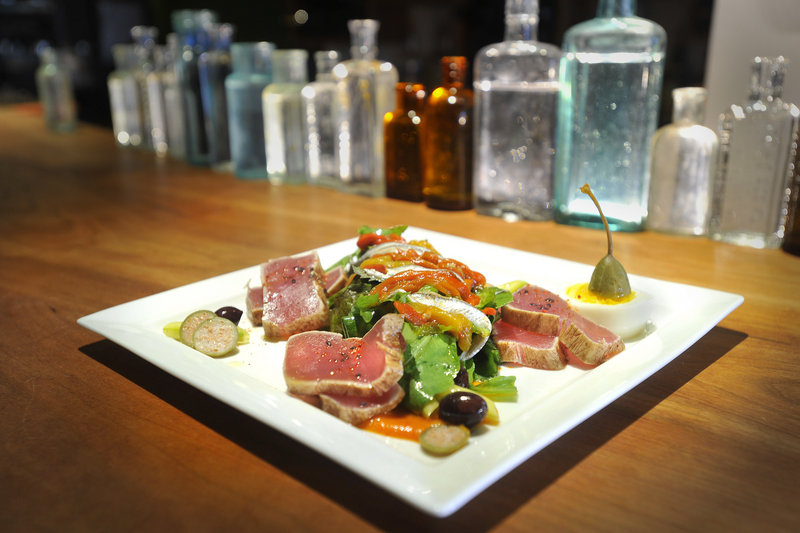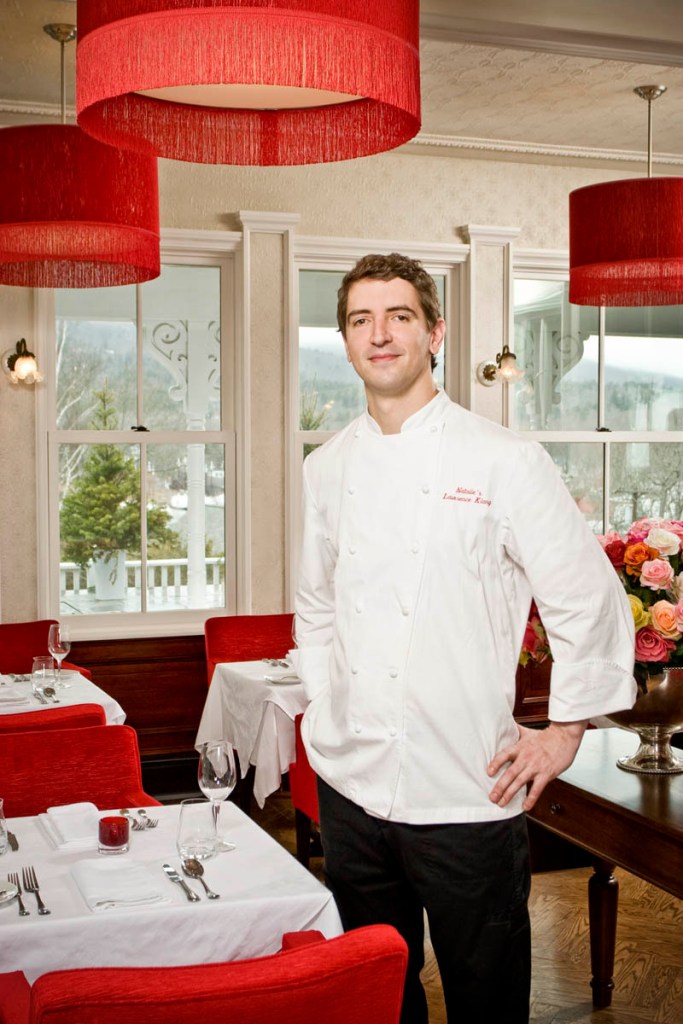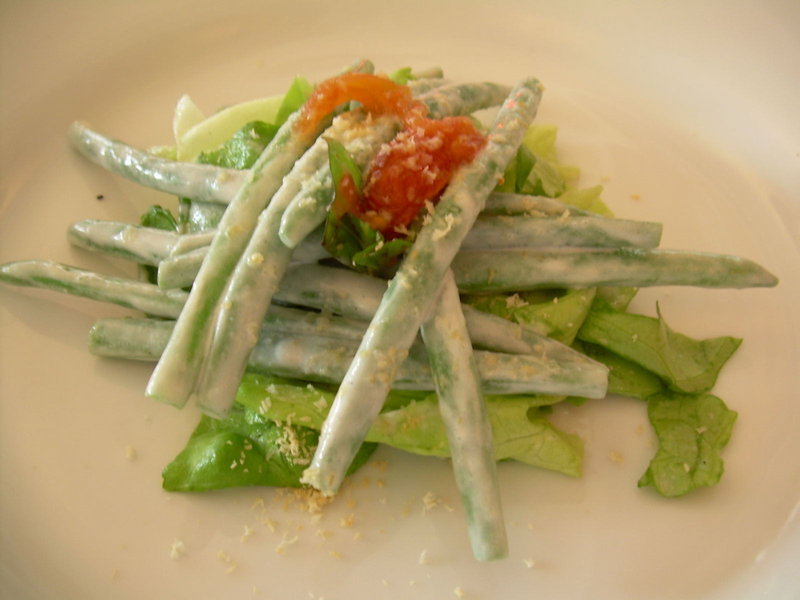Most of us just pick up the menu and order. We don’t think much about the journey our food has taken from the chef’s brain to the plate sitting before us.
But chefs are constantly looking for inspiration for new dishes and searching for ways to tweak the ones that are already on the menu.
Some menus change daily. Others change every few weeks or months, following the swell of the seasons or the whims of the kitchen.
Two Maine restaurants, the Salt Exchange in Portland and Natalie’s at the Camden Harbour Inn, recently offered a peek into the process of how they change their menus.
Jacob Jasinski, chef at the Salt Exchange, changes his menu completely every couple of months.
That means replacing some menu items to reflect the changing seasons and what’s available at the farmers market. But it also means making only minor tweaks to some favorites.
Changes made just a couple of weeks ago, for example, included adding a sweet corn cream soup with Johnny cakes, chanterelle mushrooms and jalapeno. A Hudson Valley foie gras terrine is being served with local cherries that won’t be around for very long this year.
But an heirloom black rice dish received minor adjustments just because it’s so popular.
Last fall, Jasinksi was serving the rice with sauteed mushrooms and a poached egg. Now it’s prepared with mixed spring beans and glazed baby root vegetables.
“We actually tried to take that off the menu,” he said, “but we had a lot of people asking to bring it back.”
When a new menu is under development, the chef and his staff prepare each dish at least a couple of times until they’re satisfied with it. Then there’s a staff tasting so the servers can become familiar with what they’re selling.
Jasinski says he’s happy to take feedback from customers. If he hears there’s a particular dish or preparation diners don’t seem to care for, he tries to set his ego aside and listen.
He was convinced a baked egg dish he once developed was going to be a hit. It included asparagus puree and was served with spring ramps and a simple salad. But the customers didn’t bite.
“I thought all those flavors were great together,” he said. “Asparagus, it came across with this earthiness. The bite of the ramps, the egg with the richness it just wasn’t received well by the guests. They weren’t into it at all.”
Customer feedback also once led the chef to try cooking lamb sweetbreads a different way.
“The first time we (hear a suggestion), we may consider it,” he said. “Two or three times after that, we may look into it and test it a couple of times. There’s great ideas coming from everywhere. It’s nice to have that sort of insight into what people actually want.
“You’ve got to be cooking for your customers, not for yourself only. There should be a balance between the two.”
A couple of weeks ago, Raymond Brunyanszki, owner of Camden Harbour Inn, assembled a group of locals as well as some of the best-known food and travel writers in the state — Nancy Harmon Jenkins, Leslie Land and Hilary Nangle among them — in the inn’s restaurant, Natalie’s.
Chef Lawrence Klang wanted some feedback in preparation for adding some multi-course tasting menus. But Brunyanszki also wanted to talk about the restaurant’s “split personality.”
The dining experience at Natalie’s is used to lure well-heeled tourists from New York, California and Florida who expect a certain level of food and service. But the restaurant also caters to locals, who like a more low-key experience and lower prices.
Brunyanszki thinks Natalie’s menu is reasonably priced, considering the quality of the food, and not too formal, but he often hears that locals are intimidated by the place. The restaurant introduced a new bar menu last year to attract more locals, but “still it didn’t translate into what we hoped it would,” he said.
During the recent tasting, Brunyanszki asked his guests a lot of questions, hoping to get some ideas about how to steer the ship: Should Natalie’s keep its bar menu? How important is it to Maine diners that ingredients are sourced locally?
The restaurant’s a la carte menu is changed every six to eight weeks, Brunyanszki said, and it always begins with a sit-down meeting with Klang. Once the chef has developed a menu they agree on, there’s an in-house tasting so the staff can become familiar with the components of each dish.
Klang said his menus are influenced “by a number of things, especially the weather.”
“Cooking is a very personal thing,” he said. “It can be a rather selfish endeavor, if that makes any sense, because at the end of the day you’re cooking what you believe to be good, and you’re basing that on past experiences and maybe current products that are available.”
Each dish evolves, with Klang making subtle changes almost weekly. It helps, he said, to have people on staff who can contribute ideas that will add something to the dish as a whole.
“I have one guy I work really well with in that capacity,” he said. “The dish kind of evolves itself because you think, what does this need, it’s lacking this, in terms of aesthetics and in terms of flavor. You don’t want a dish to just taste good and not look good, which can be kind of difficult to do at times.”
Perhaps the most discussed new dish at the tasting was the Chilled Lobster Gazpacho, which included basil, finely diced heirloom zucchini, small chunks of lobster and a Parmesan cracker, all swimming in a base of tomato water.
The guests raved about this flavorful dish that was so reminiscent of summer. But Klang almost seemed puzzled, noting that he had not been able to prepare the gazpacho that day the way he normally would have liked.
What would have been different? Klang said he usually includes tomatoes, nicoise olives and a touch of olive oil, then whips in a bit of pesto.
Klang said he wasn’t sure if all of the dishes he served that day would actually end up on his final menu.
“I have to break things down in terms of how many steps are involved to execute it,” he said. “When you have as many menus as we offer, I can’t put really highly complex cooking techniques and detailed platings on the menu because my staff will suffer, and then the customer will suffer.
“Everything has to work well together.”
Staff Writer Meredith Goad can be contacted at 791-6332 or at: mgoad@pressherald.com
Send questions/comments to the editors.







Success. Please wait for the page to reload. If the page does not reload within 5 seconds, please refresh the page.
Enter your email and password to access comments.
Hi, to comment on stories you must . This profile is in addition to your subscription and website login.
Already have a commenting profile? .
Invalid username/password.
Please check your email to confirm and complete your registration.
Only subscribers are eligible to post comments. Please subscribe or login first for digital access. Here’s why.
Use the form below to reset your password. When you've submitted your account email, we will send an email with a reset code.